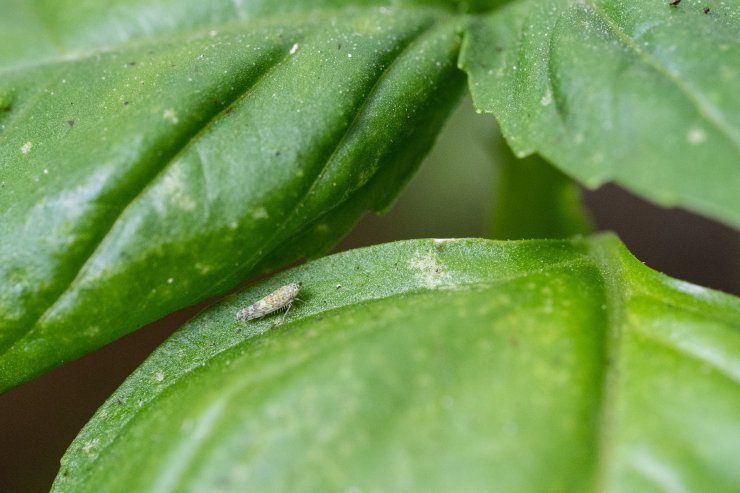
Bug on basil plant
Have you noticed something wrong on the leaves of your basil plants? Do you see holes forming on the leaves that may indicate something is eating away at your tasty basil? One of the biggest challenges of gardening is keeping the pests away. The following pests are known for eating basil leaves:
Slugs and Snails
The good old slug enjoys eating basil leaves as much as we humans do! A key sign that slugs or snails are enjoying your basil is ragged holes along the leaves of the basil plant. These holes may become even more prevalent after a rainstorm has passed by—that’s when the slugs and snails come out to dine on your basil!
Try any effective natural slug remedy to keep the slugs and snails away—or, for example, set up a beer trap around the perimeter of the basil plants. What is a beer trap? Well, slugs love beer, so place a small tin of beer on the ground—the slugs will be attracted to the beer, go for a sip, and fall in and drown.
Japanese Beetles
Japanese beetles could be the primary culprit chowing away at your basil plant leaves. Peak season for Japanese beetles is the summer—the months of June and July. You’ll know that Japanese beetles are eating your basil plants, because all that will be left of your plants will be the larger veins along the basil plant foliage. Japanese beetles sure do love to munch on basil!
To rid your plants of Japanese beetles, try spraying with essential oils such as neem or cedar oil. Or try a household dust-buster to suck up large beetle invasions.
Small Insects like Aphids
Aphids and other soft-bodied insects are likely to enjoy eating your basil plants, too. Aphids are difficult to detect, because they are tiny and often hide on the underside of your basil leaves.
If your basil is suffering from aphids, use a soapy spray on your plant leaves to repel the aphids. Or introduce an aphid predator. Ladybugs, for example, love eating aphids, but will leave your basil plants unharmed.
Leafhoppers
Leafhoppers love to eat basil, too. Both the adults and the leafhopper nymphs will damage your basil plant leaves by puncturing the underside of the leaves. Leafhoppers need to be dealt with quickly, because they also secrete a watery saliva that further damages your entire garden. Try any of these effective organic methods for getting rid of leafhoppers:
- Mix 1 tablespoon of rubbing alcohol with 1 quart of liquid soap, to boost the soap’s effectiveness—spray directly on the tops and bottoms of leaves where the pests are.
- Hang sticky traps or double-sided tape around affected plants, and watch your traps catch the pests.
- To capture even more pests, shake your plants vigorously enough to dislodge the adult leafhoppers. When they fly away, many will get stuck in the sticky traps.
Do pests attack your basil plants every year? How do you handle removing them—and even preventing them in the first place? Please tell us how you treat your basil plants to avoid pests.


 Previous
Previous

